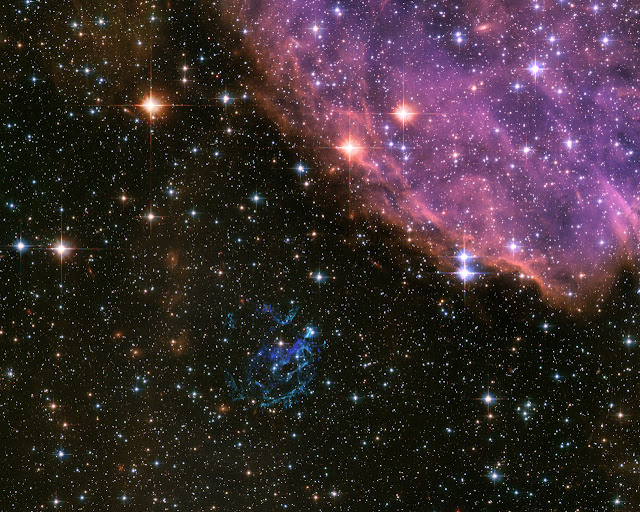In the nearby galaxy known as the Small Magellanic Cloud, a massive star has exploded as a supernova and begun to dissipate its interior into a spectacular display of colorful filaments, reminiscent of fireworks display.
The supernova remnant (SNR), known as "E0102" for short, is the greenish-blue shell of debris just below the center of this image from NASA's Hubble Space Telescope. This delicate structure, glowing a multitude of lavenders and peach hues, resides in the upper right of the image.
Determined to be only about 2,000 years old, E0102 is relatively young on astronomical scales and is just beginning its interactions with the nearby interstellar medium. Young supernova remnants like E0102 allow astronomers to examine material from the cores of massive stars directly. This in turn gives insight on how stars form, their composition, and the chemical enrichment of the surrounding area. As well, young remnants are a great learning tool to better understand the physics of supernova explosions.
The Small Magellanic Cloud is a nearby dwarf galaxy to our own Milky Way. It is visible in the Southern Hemisphere, in the direction of the constellation Tucana, and lies roughly 210,000 light-years distant.
Image Credit: NASA, ESA, the Hubble Heritage Team (STScI/AURA) and J. Green
Explanation from: https://www.nasa.gov/multimedia/imagegallery/image_feature_684.html




No comments:
Add your comment